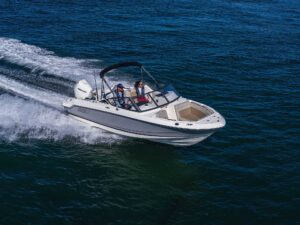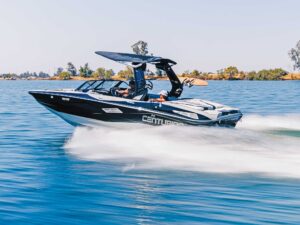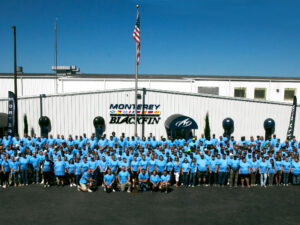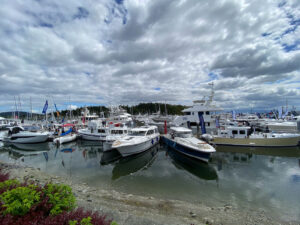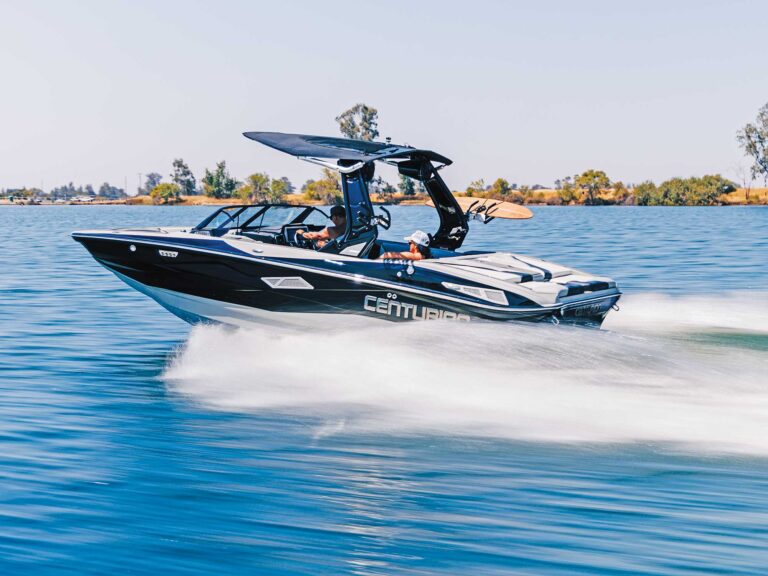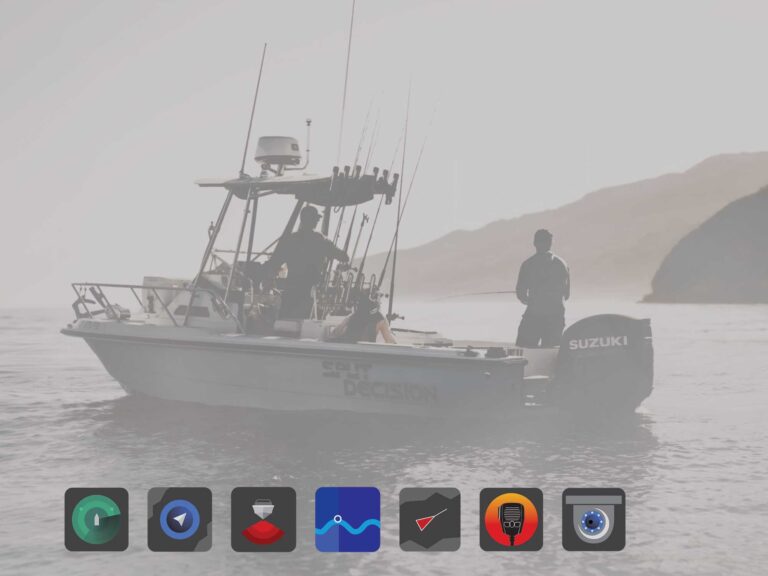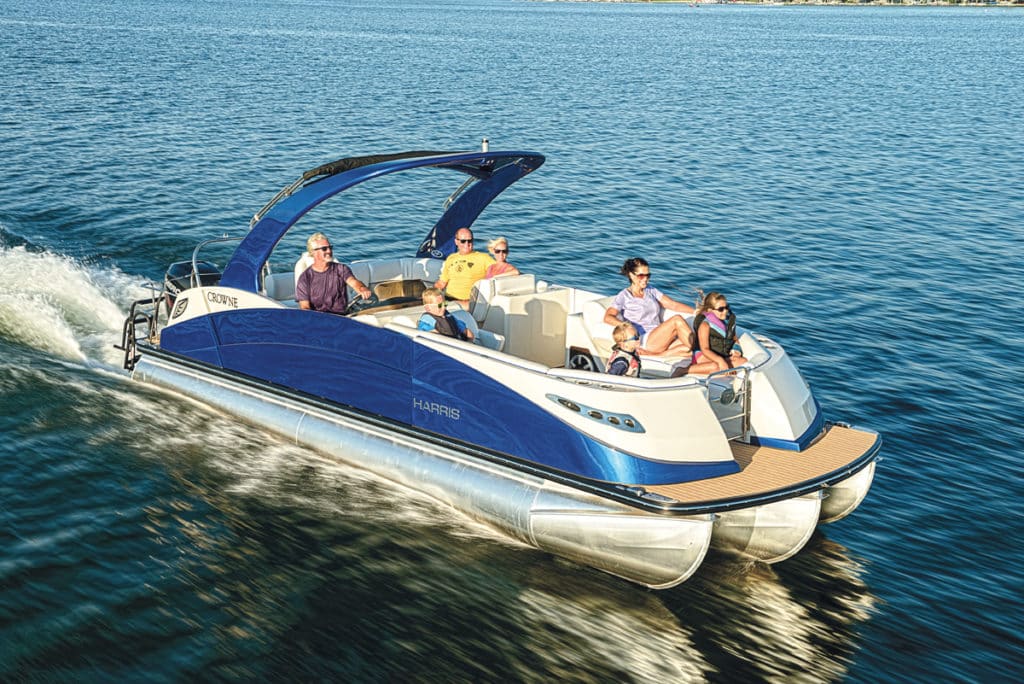
Back in 1952 a Minnesota farmer named Ambrose Weeres welded together two sets of steel barrels and secured a wooden platform on top. When he mounted a small outboard on the aft end, set in between the twin tubes, Weeres essentially invented the modern pontoon boat. Other people who took note of his stable, buoyant design asked him to build more of them; he called the design the Empress. So began the culture of pontoon boats. Their mission: to serve as large-capacity family entertainment centers, style and speed be damned.
The pontoon boat concept spread throughout the freshwater lakes of the Midwest, including Indiana, where two brothers named Pete and Ernie Harris took note. “We’d seen someone who had taken 55-gallon barrels and drop tanks off of airplanes and used them to build up pontoon boats,” Pete Harris once said. “The more individuals we saw building them, we thought, ‘Hey, there might be a market for that.’”
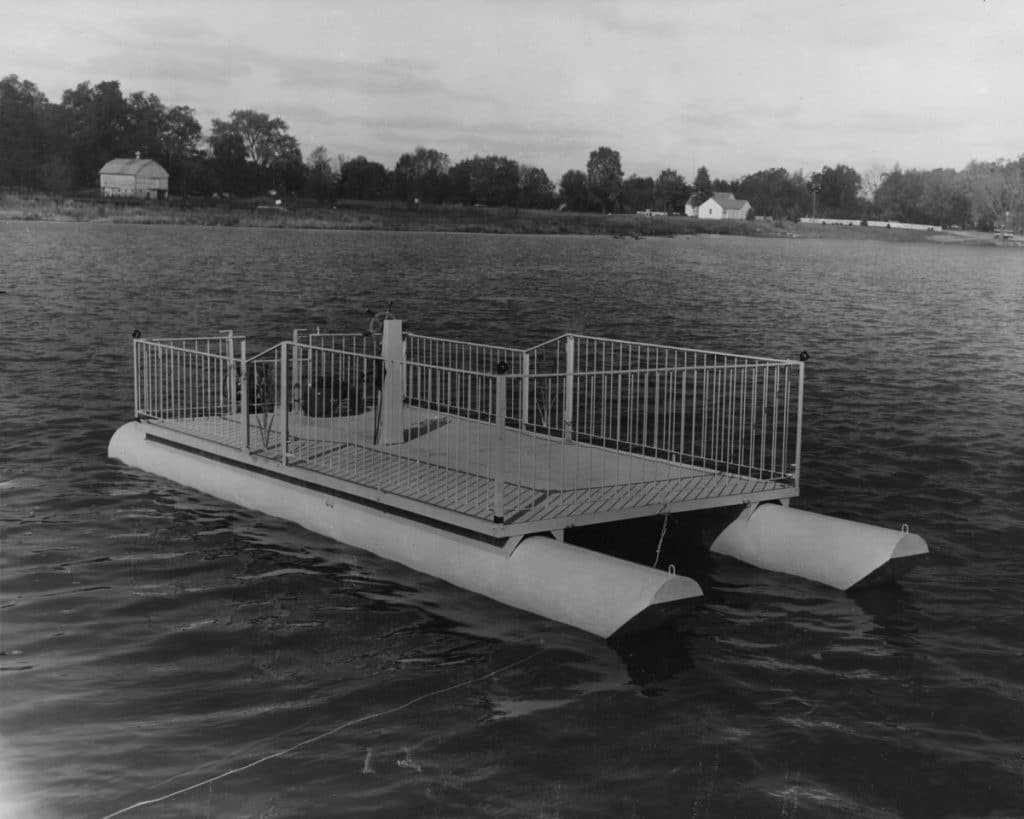
With that, the Harris brothers developed and marketed the Harris FloteBote. Launched in 1957, the FloteBote is one of the first modern production pontoons. What their ’toons lacked in curb appeal, they made up for in entertainment value.
“Right from the beginning, people recognized that pontoons offered an easy option for getting on the water,” said Bob Fieldhouse, director of engineering for Harris Pontoon Boats. “Besides being able to [be boarded] easily, they were less expensive and required less maintenance than any other type of boat that could boast a similar person capacity.”
For decades most development pertaining to pontoons evolved around the twin tube concept, maintaining the basic rectangular shape while making improvements to the tubes — or logs, as many ’tooners call them — while concentrating heavily on improving layout and creature comforts.
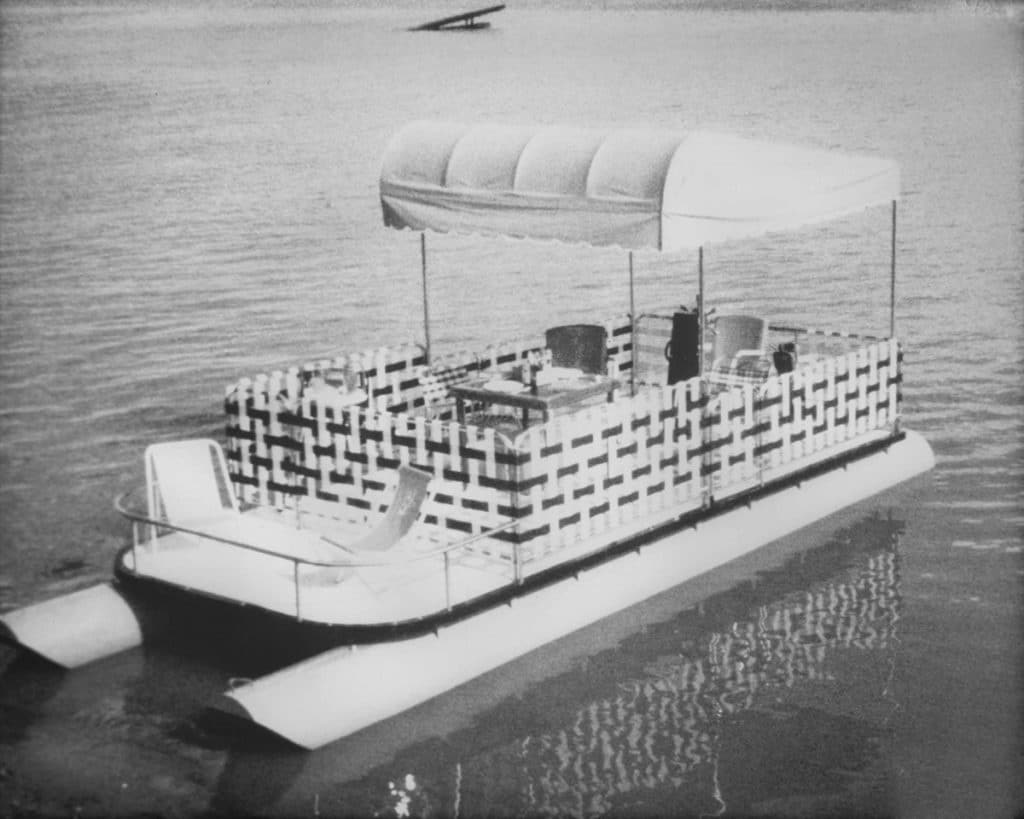
The Harris FloteBote featured steel tubes and primitive rails and furniture on deck. Harris
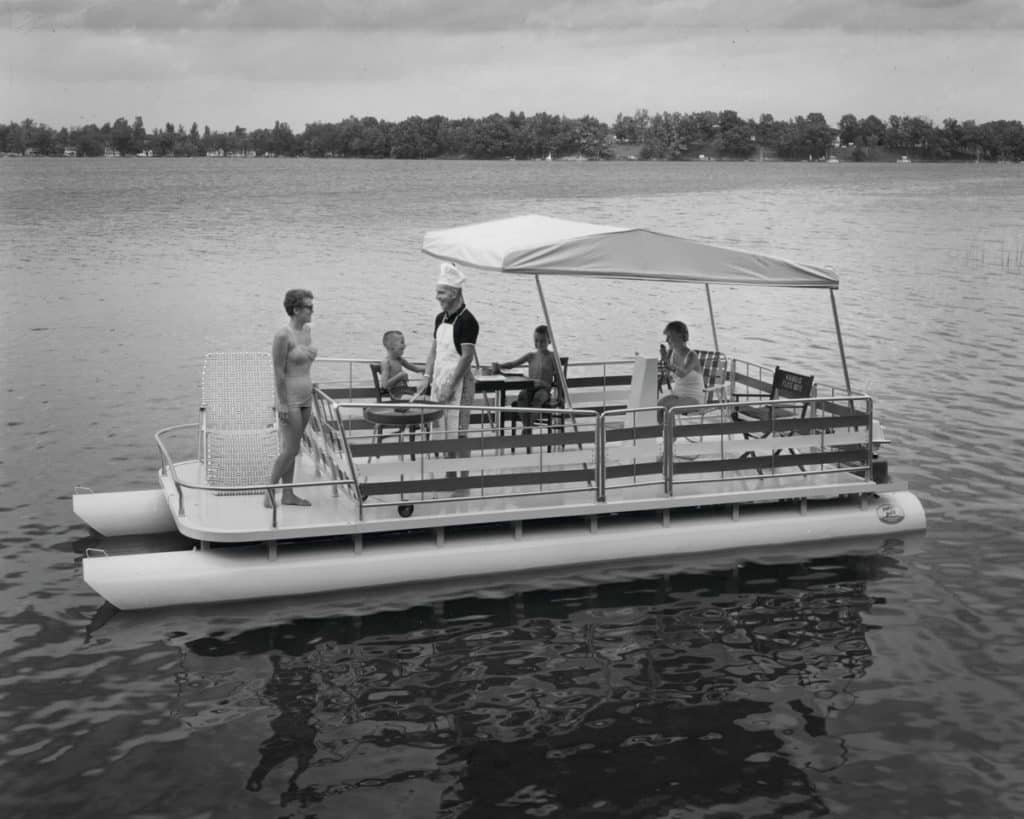
Harris evolved with dolphin-nose cones as well as improved rails and seating. Harris
Then, something happened. Pontoon boatbuilders realized that, by adding a center tube, they could start achieving performance traits more comparable to boats with a planing hull. Also, somewhere along the line, styling and profile started to matter as much as seating and cooler space. So now, over 60 years after Ambrose Weeres got creative with some steel drums, we have boats like the Harris Crowne 250, a ’toon that can hang with the bowriders and deck boats on the lake and that is one in a legion of boats that have made pontoons the hottest sellers in boating.
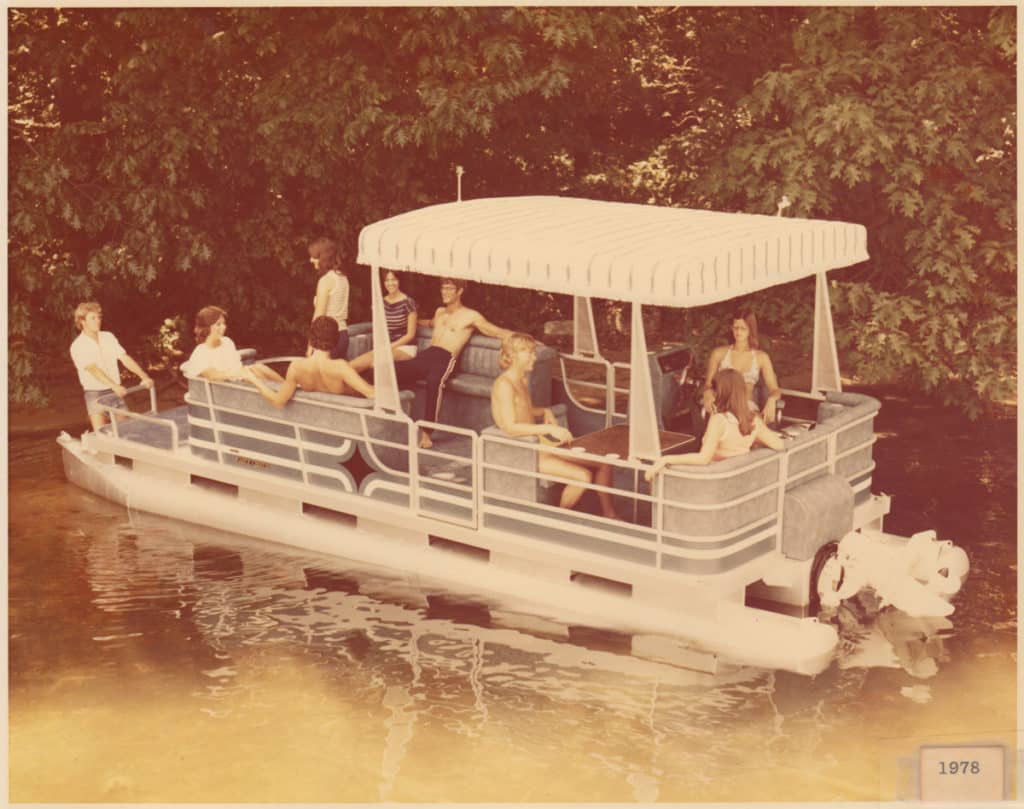
Boaters increasingly grew to appreciate the pontoon’s capacity, stability and draft. Harris
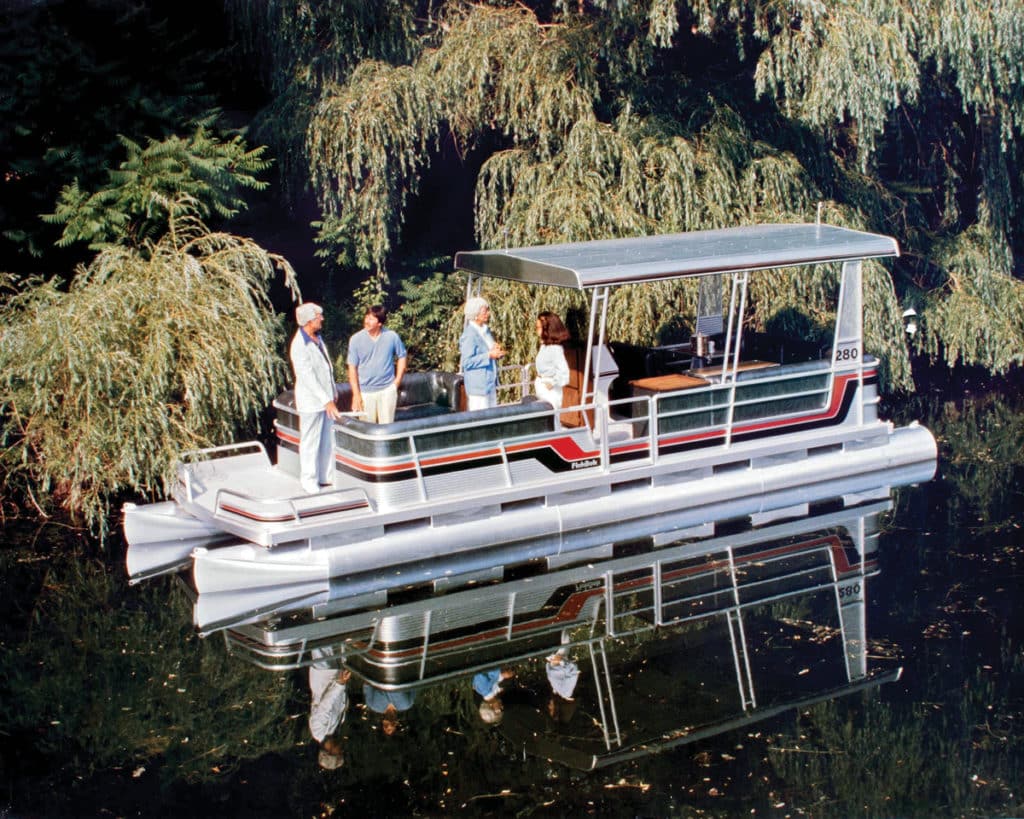
Harris further refined the FloteBote with more stylized seating and amenities. Harris
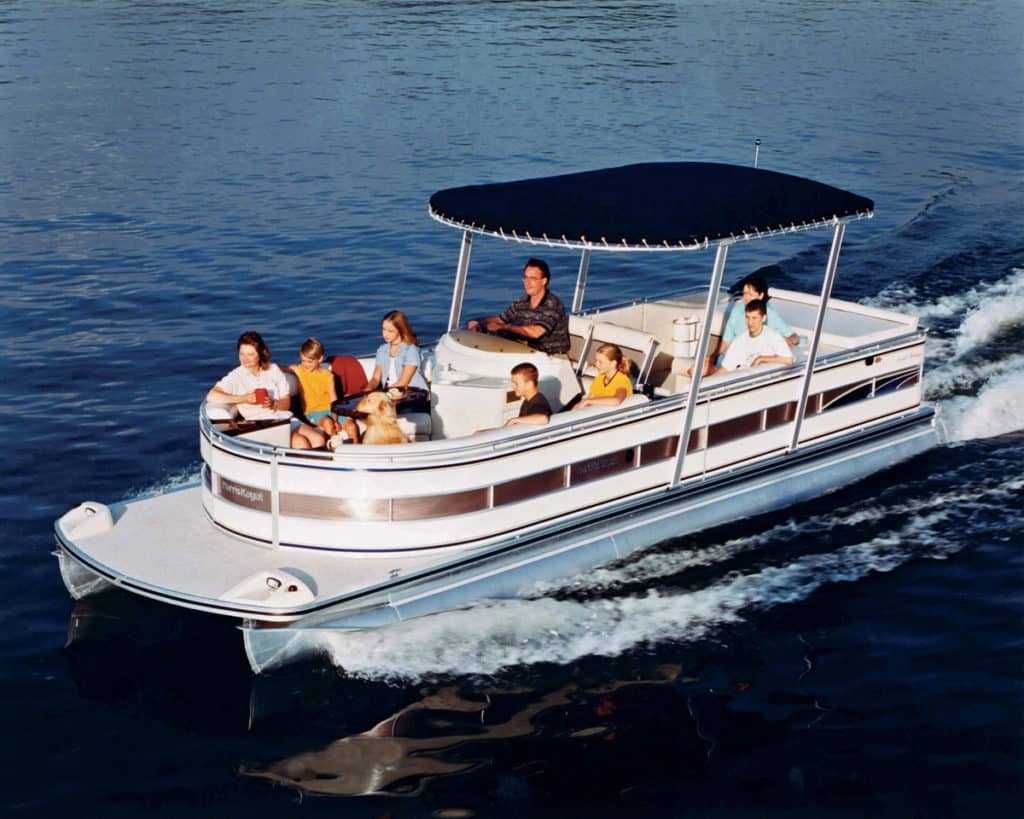
Harris extended the bow platform to cover the tubes and offered curved rails. Harris
From our conversations with Harris and other builders, and from our staff’s collective experience of testing pontoon boats, we came up with a list of game changers. Here, then, are eight of the biggest advancements in ’toon technology, and how they shape today’s boats.
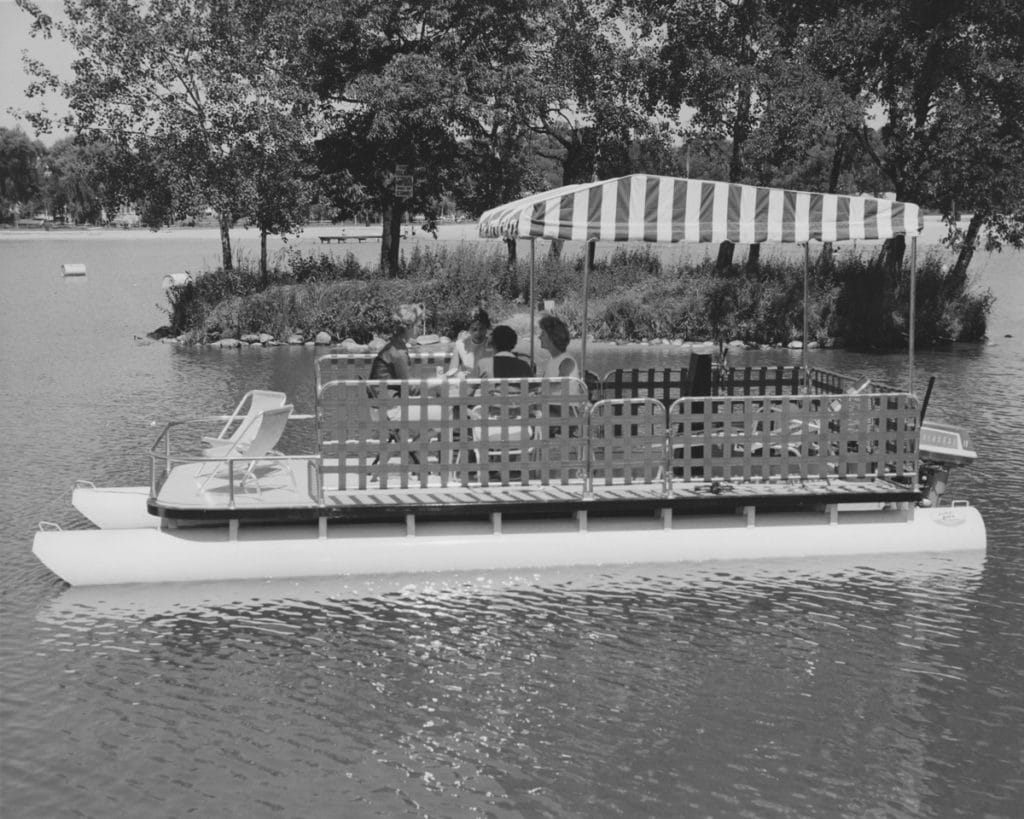
For the first few years, builders made pontoon logs out of steel. Then, in 1958, Godfrey Boats, another historic pontoon company, produced the first tubes made out of aluminum, which was lighter weight and easier to work with and shape than steel. Harris switched to an aluminum build in 1968. Harris
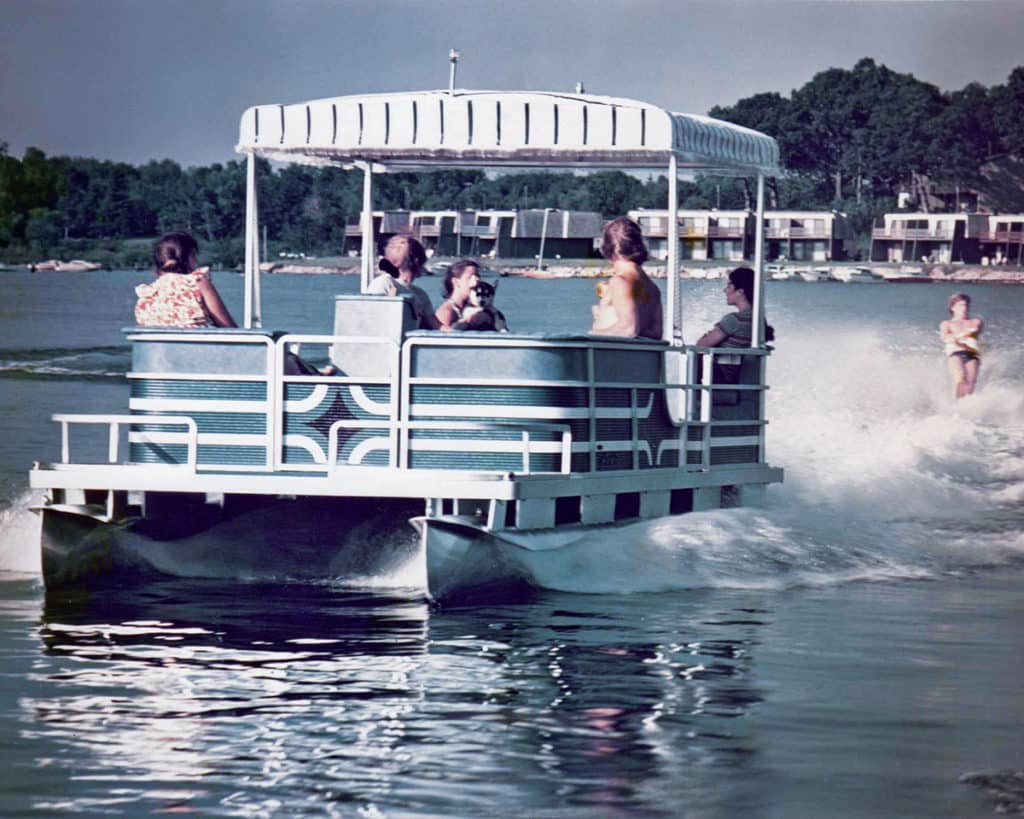
The original pontoon design was narrow and heavy, but by switching to aluminum Harris could build lighter, wider pontoons capable of handling heavier-horsepower outboards. Bigger engines could push the boats faster, which caused early pontoon designs to throw spray over the bow and onto the otherwise happy passengers. Harris had solved the problem in 1959 by inventing the “dolphin-nose cone,” a two-piece curved cone with full-length splash guards at the front of the boat that allowed pontoon boaters to apply more throttle without crew-wetting consequences. Harris
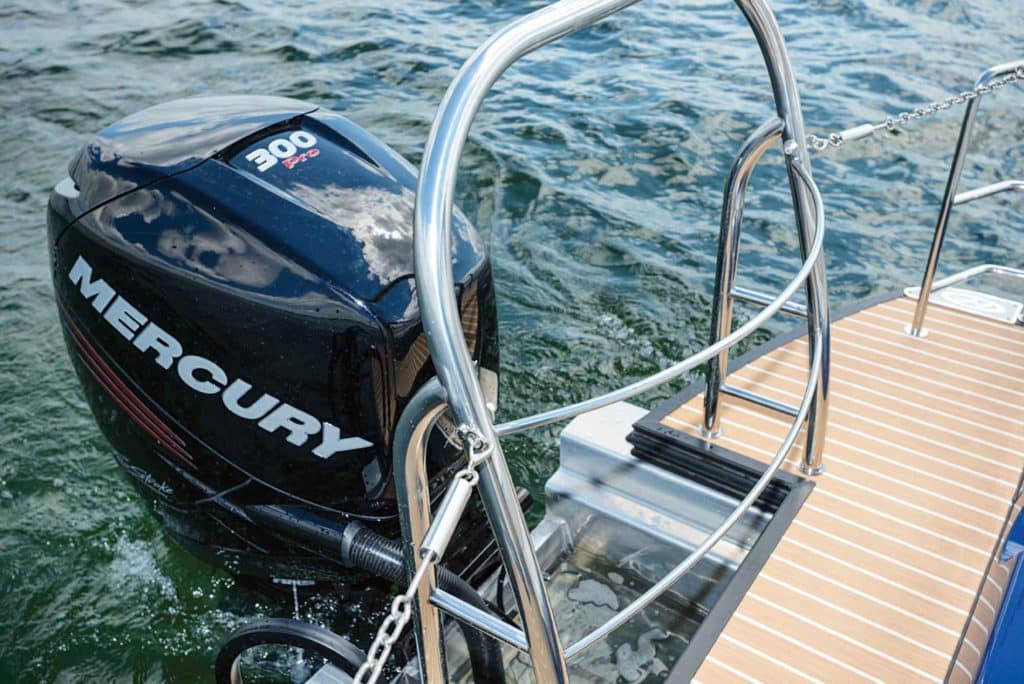
Back in the early 1970s, Harris installed a 140 hp engine into one of its pontoons, making one of the first of its kind, capable of generating enough performance to pull an adult skier. Even so, the outboard is still the pontoon power of choice. The advent of larger, heavier outboards propelled boatbuilders to rethink their engineering. “With higher-horsepower engines becoming more popular, the entire structure of a Harris pontoon had to be redesigned to handle the heavier weight of the engines and the forces they exert on the boat’s chassis,” Fieldhouse explained. “Besides reducing the spacing between cross members in strategic areas and utilizing a mix of different cross-member extrusions in specific places to add more structural rigidity, boat weight balancing — or center of gravity forces — are now closely monitored and studied to ensure optimal performance without sacrificing carrying capacity of the boat.” Fieldhouse mentioned a recent development as well, Harris’ patent-pending transom design for a dual-engine platform that allows mounting two 350 hp engines that can operate in opposing directions, which allowed the boat to maintain its position regardless of the current or wind forces. Mercury Marine
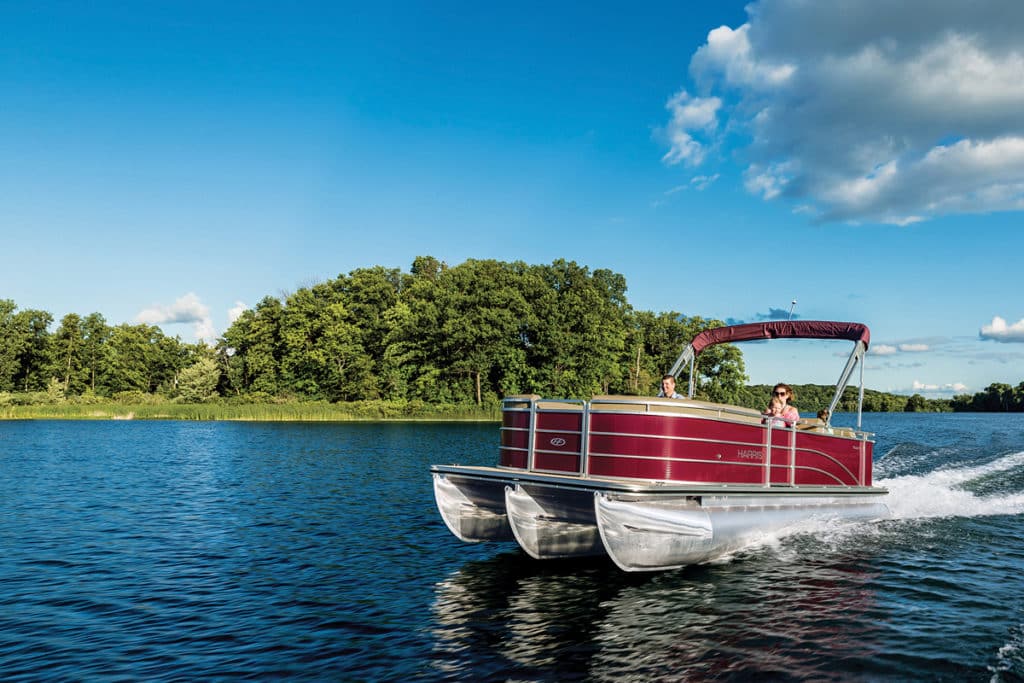
No matter what pontoon builders did to improve speed, performance and handling, they were limited by the restrictions imposed by twin log boats. Because of this, most pontoons exhibited an off-putting outboard heel in turns, could not turn very sharply and couldn’t attain speed numbers comparable to the average family runabout’s. In the 1980s, builders like JC Pontoons in Indiana began experimenting with adding a third tube along the centerline of the boat. This increased buoyancy and, combined with strakes, helped negate outboard lean. With its TriToon concept, JC Pontoons began building boats that could break 50 mph. Other builders folowed suit. Some started placing larger-diameter tubes in the center, adding lifting pads to the aft end of the center tube like you’d find on a bass boat, V-shaped keels to mimic fiberglass hulls and other innovations. Adding a center tube also allowed builders to install larger fuel tanks into it, extending range and providing more go-juice for the bigger outboards. Boating Magazine
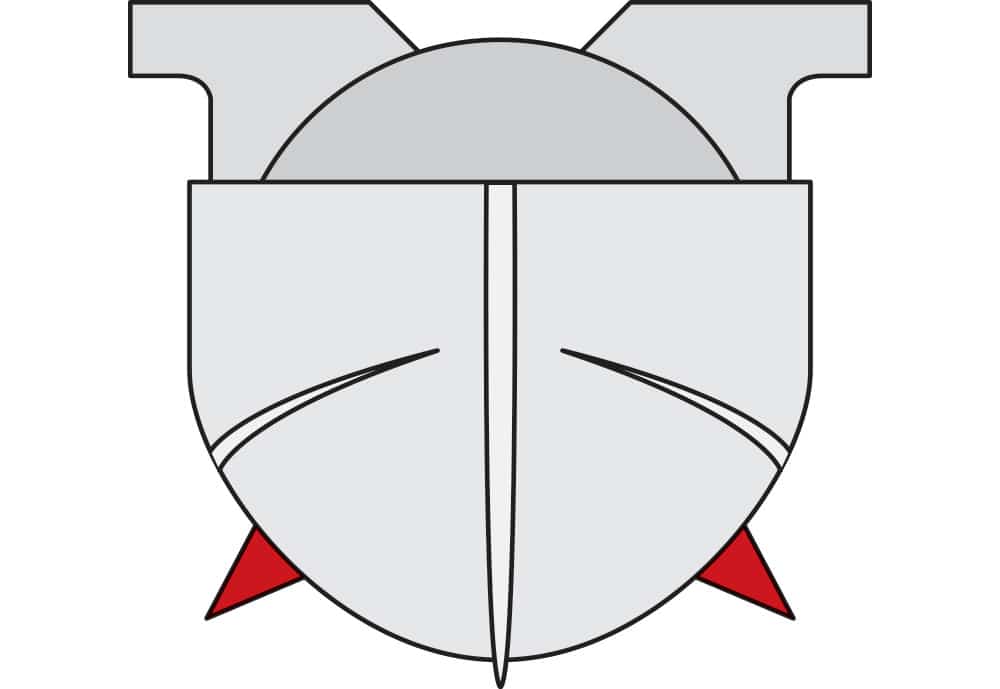
As pontoon builders equipped their boats with bigger outboards, they needed to add something to help the tubes generate lift at the bow so they didn’t just plow through the water. Without lifting strakes, pontoons struggled to reach even 30 mph, which is why, until recently, our pontoon performance parameters called for taking 0 to 20 mph speed recordings. Now, there are plenty of ‘toons capable of hitting 50, 60 or even 70 mph. Boating Magazine
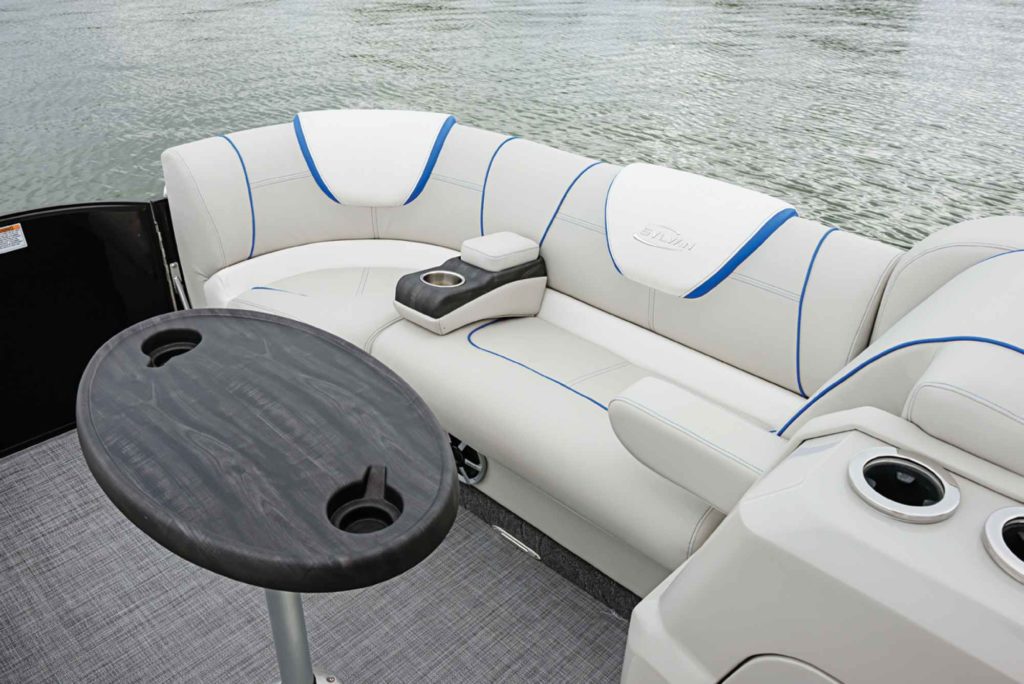
With all that has changed below the waterline, people still buy pontoons for what they offer on deck, namely tons of seating and entertainment amenities. They’re why every pontoon builder offers several floor-plan variations compared with the one-size-fits-all layouts of most deck boats and runabouts. Nothing helped advance the layout more than roto-molded seat bases. “These seat bases really changed the game with their qualities of long life and zero maintenance compared with wooden seat bases,” Harris’ Bob Fieldhouse said. The seat bases offered dry stowage underneath and, since they’re easier to manufacture, allowed for the explosion of different floor plans. Boating Magazine
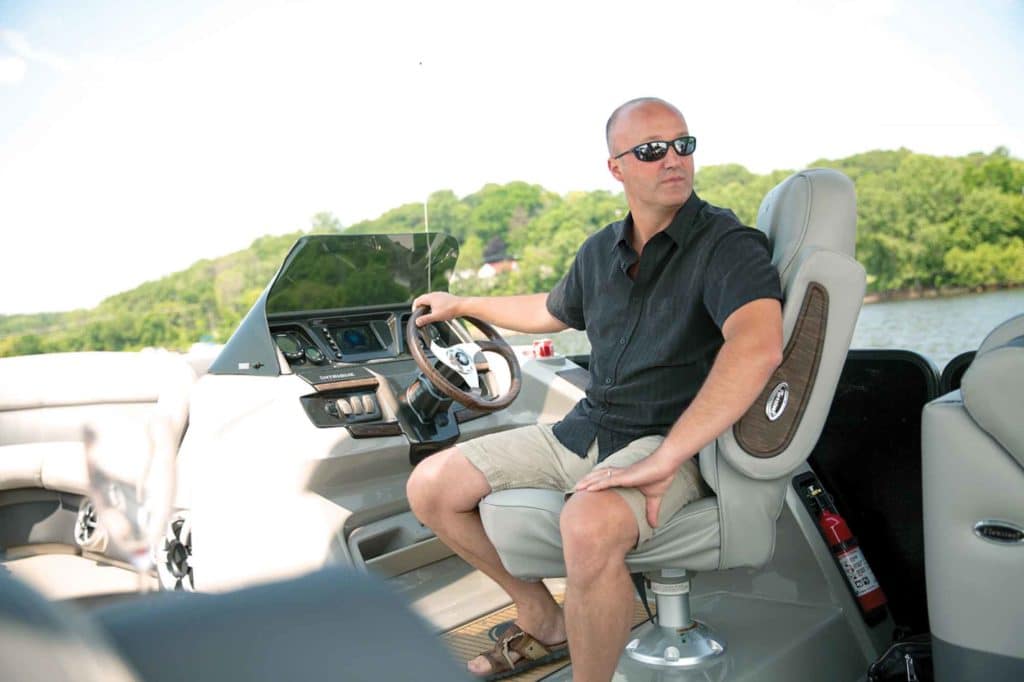
Because pontoons carry the beam all the way to the bow, they allow builders to equip the bow with seating arrangements comparable to the aft cockpit of a conventional cruiser. The ability for so many people to gather in the bow of the boat brought forth a new problem for pontoon builders: restricted visibility from the helm. Builders solved this by elevating the helm off the deck on either fiberglass or roto-molded components, freeing up the driver’s line of sight. Here is an example of a helm elevated 5 inches off the deck, as seen aboard a Premier 270 Intrigue. Boating Magazine
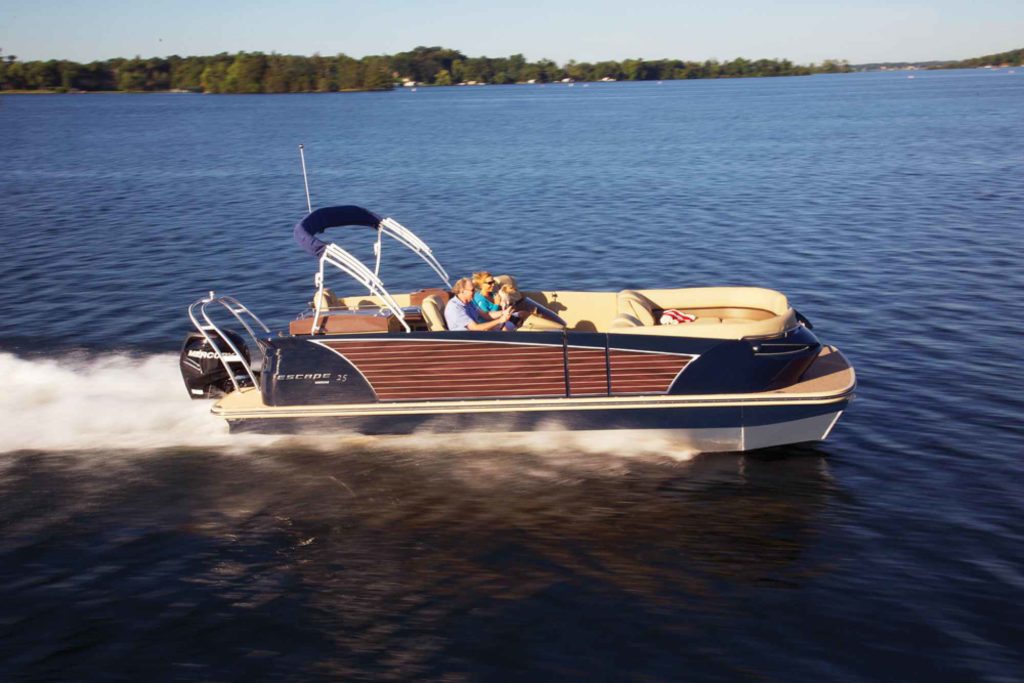
Besides adding strakes, pads and keels, builders started experimenting with tube shape, with different builders offering concave, elliptical or even V-shaped tubes to improve performance. The results show: Several models we’ve tested from builders carve elegant inboard turns at 30 mph, a trait in pontoons that 10 years ago didn’t exist. Boating Magazine
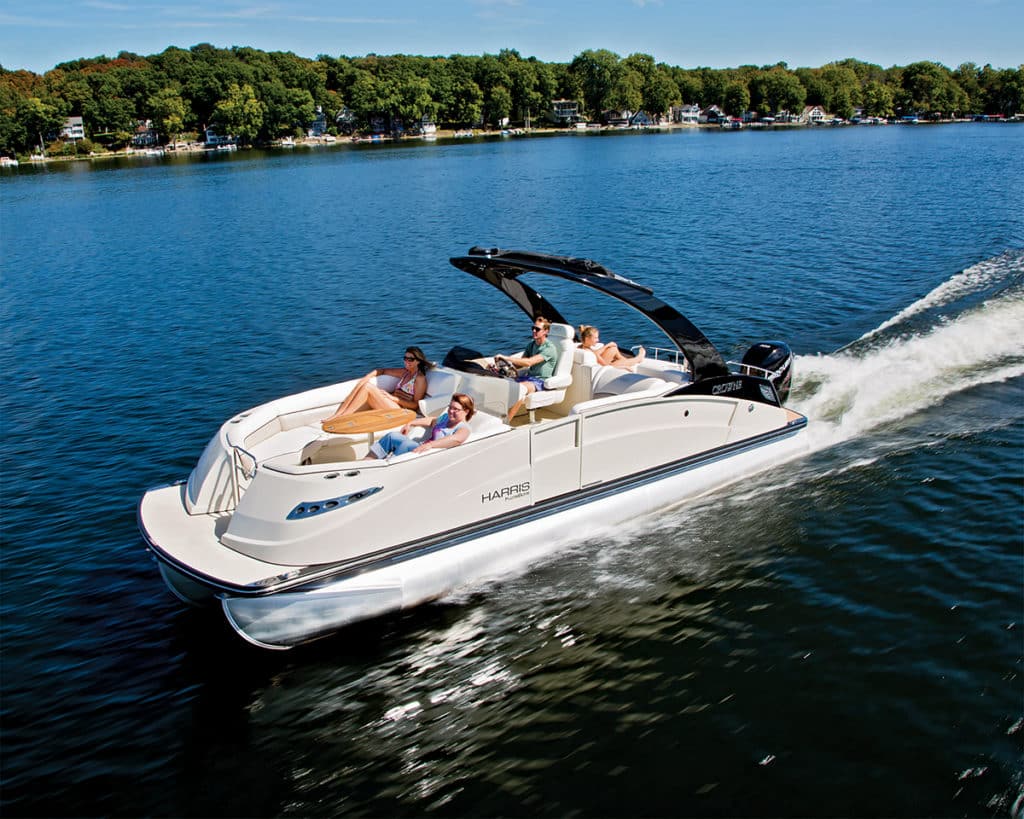
Today’s ‘Toons
At first glance it would be easy to mistake the Harris Crowne 250 for a fiberglass V-hull boat. Its profile bears very little resemblance to its ancestors in the Harris lineup. A winner of a National Marine Manufacturers Association 2013 Innovation Award, it epitomizes possibilities for the modern pontoon. It still has all the seating and people capacity, capable of holding 12 passengers, but it looks … sleek.
Abovedecks, Harris builds the Crowne 250 with molded fiberglass components fore and aft, instead of roto-molded seats and aluminum rails. It integrates aluminum panels along the side decks that seamlessly blend with the fiberglass modules, so that it maintains an elegant, unbroken sheer line. (What? We normally reserve sheer line for monohull beauties.)
Belowdecks, Harris uses what it calls its Performance III package, which drops the 25-inch-diameter center tube an inch lower than the twin outboard tubes, creating a V-hull effect. The outer tubes have interior lifting strakes, and the center tube has strakes on either side to improve performance. Its full aluminum skin underneath reduces drag and increases speed and efficiency. When paired with a 300 hp Mercury Verado, the result is an instantaneous hole shot, a 6.9-second run to 30 mph and a top speed approaching 50 mph. More than the speed, the Crowne 250 leans inboard during hard-over turns at the helm and really carves turns.
The good news for you as a boat buyer is that Harris is not the only builder capable of producing a sleek and stylish performance pontoon boat. Builders like Bennington, Godfrey, Manitou, Starcraft, PlayCraft, Premier and more all build boats that measure up to the demands of the 21st century.
Were Ambrose Weeres alive today, what do you think he’d make of that?

